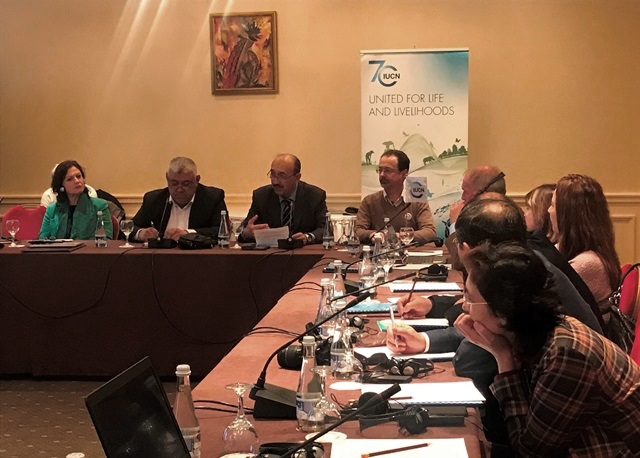Identifying potential World Natural Heritage sites in Central Asia
Aiming to ensure the conservation of sites with outstanding natural values in Central Asia, IUCN is engaging with the five countries in the region to spark consultation and build knowledge on the nomination and effective management of World Heritage sites.
Once listed as World Heritage, the sites should fulfil the strict requirements of the WH Convention on conservation and management. “Recently published IUCN World Heritage Outlook 2 assessed changes in the conservation prospects of World Heritage, and revealed the challenges we face today, particularly in Central Asia,” said Alisher Ikramov, Secretary-General of National Commission of the Republic of Uzbekistan for UNESCO, opening the second consultative workshop on 28 November in Tashkent, Uzbekistan. “Such meetings are of great importance as they offer us the opportunity to share views, experiences and examples of good practice,” he added.
The meeting was co-hosted by IUCN ECARO, the National Commission of the Republic of Uzbekistan for UNESCO and the State Committee of Ecology and Environmental Protection of the Republic of Uzbekistan, and engaged experts from four countries of Central Asia in a constructive discussion on the draft World Heritage Thematic Study currently under preparation by IUCN. Khalilula Sherimbetov welcomed the participants on behalf of the State Committee of Ecology and Environmental Protection of the Republic of Uzbekistan and reminded that Uzbekistan is a State Party to the 1972 Convention since 1993, having four cultural and one natural WH sites, and 30 sites on the national Tentative List.
As the official Advisory Body on nature under the World Heritage Convention, IUCN is leading the process that aims to identify sites with potential for future inscription in the WH List. “The process of nomination of sites for their inscription on the WH list is a long and difficult one and often requires years of study and work. Countries should make every effort to guarantee that the protection and management of the proposed sites as well as their integrity meet the World Heritage requirements,” said Hervé Lethier, IUCN World Heritage expert. One of the first steps to be taken by each of the countries is to re-examine or submit the lists of important natural and cultural heritage sites with potential for inscription.
Experts from Central Asia, IUCN and international organisations will continue to work on the Thematic Study for Central Asia aiming to present its findings at the 43rd World Heritage Committee Session in Baku, Azerbaijan in 2019.
The initial analysis singled out the “mountains of Central Asia” as a potential WH site. Spreading across the five countries, they are recognised as one biodiversity hotspot, being home to impressive wildlife, including several endemic and/or iconic and endangered species, like the Snow Leopard (Panthera uncia). Cold winter deserts, a distinguished feature of the region, have also a high potential for nomination according to IUCN experts. However, several of the potential sites amongst them may be under significant pressure from the mining industry.
Some of the standards and methodologies that can be applied to achieve excellence in the management of World Heritage sites were introduced at the meeting, such as Enhancing our Heritage Toolkit, a comprehensive set of evaluation methods that help natural World Heritage site managers to design and implement management effectiveness assessments suitable for globally significant conservation areas, designed by UNESCO World Heritage Centre, IUCN and other partners.
The World Heritage regional consultation process is initiated within the project funded by the German Federal Environment Ministry's Advisory Assistance Programme (AAP) for environmental protection in the countries of Central and Eastern Europe, the Caucasus and Central Asia and other countries neighbouring the European Union. It is supervised by the Federal Agency for Nature Conservation (BfN) and the German Environment Agency (UBA).



